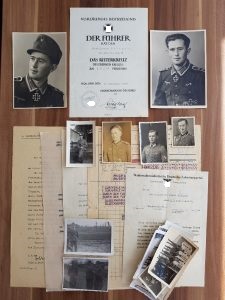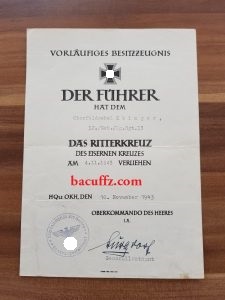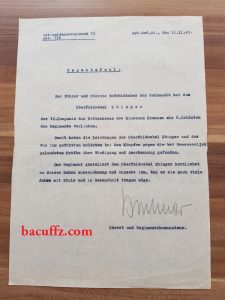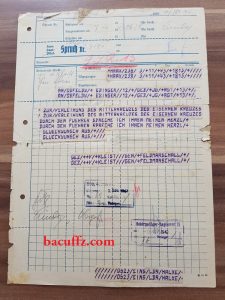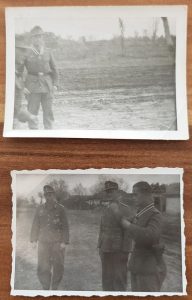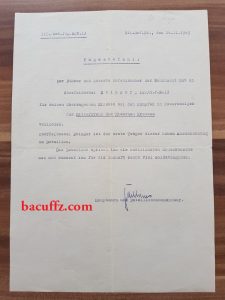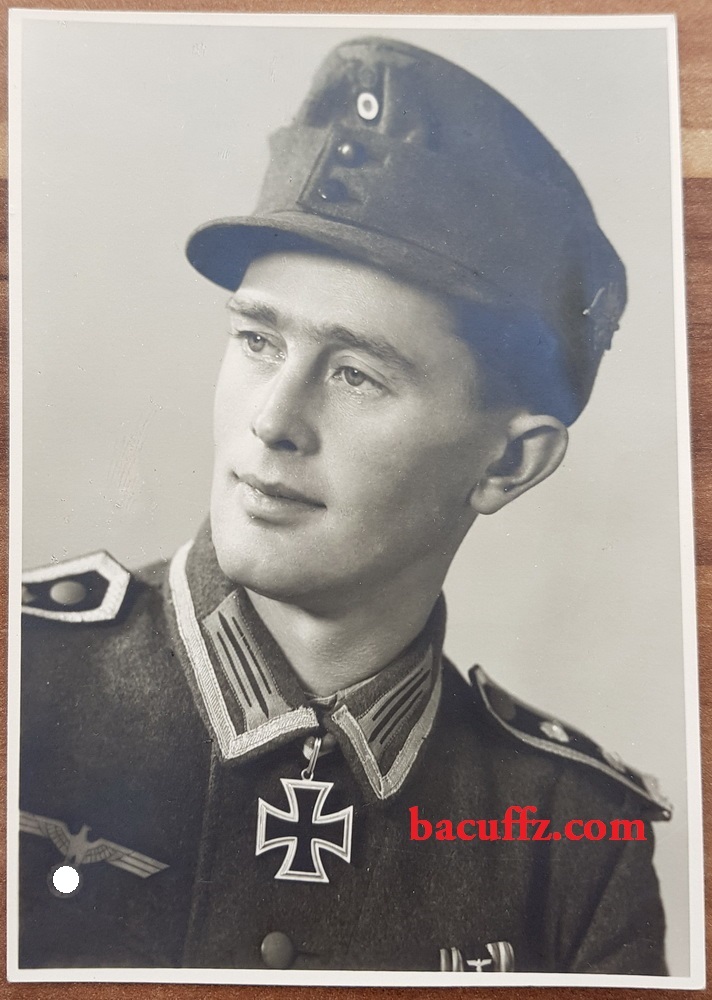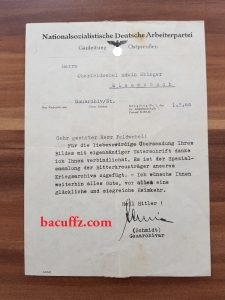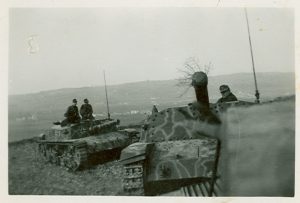Hallo Sammlerfreunde,
ja der Sommer ist da und wie schon im BLOG Bereich erwähnt, nicht unbedingt die Zeit sich an den PC zu setzten und mit Recherchen die sonnigen Tage verbringen.
Ich selbst muss mich motivieren zu schreiben, weil man halt andere Dinge auf dem Zettel hat und die Zeit doch auch im Garten bei Gerstensaft und BBQ verbringen kann.
Trotzdem würde ich gerne ein Nachlass vorstellen und ein heikles Thema in der Sammlerwelt anschneiden.
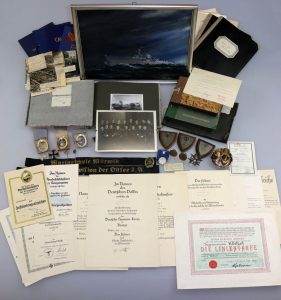
Aber erstmal zu dem Nachlass. Mein Sammlerfreund Hardy konnte diese Nachlass eines Soldaten der Kriegsmarine für seine Sammlung sichern. Für mich immer eine Augenweide solche Konvolute vorzustellen und etwas geschichtlichen Hintergrund zu liefern.
Allerdings muss ich dann doch den Finger in die Wunde legen und die ganze Geschichte erzählen. Als ich die E-Mail mit den Bildern des Nachlasses und den Trägernamen bekam, beginne ich natürlich erstmal mit OSINT (Open Source Intelligence) – soll heißen ich „google“ den Namen und schaue mal was das Netz so hergibt. Es dauerte nicht Lange und ich konnte den Namen und den kompletten Nachlass in einem Auktionshaus aufspüren. Zufrieden schaute ich mir dort alles an und war beeindruckt welchen Umfang das Konvolut hatte.
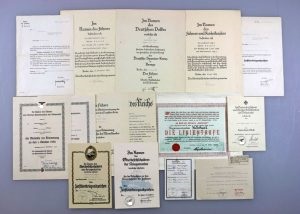
Parallel bekam ich auch die Bilder für den Blog…..
Hmmmm……das kann doch nicht alles gewesen sein. Dann wurde uns beiden schnell klar das der versteigerte Nachlass und der Nachlass von Hardy nicht mehr die gleichen Waren.
Es wäre zu verschmerzen gewesen, wenn die Abzeichen von Nachlass getrennt worden wären. Da machen wir und mal nichts vor, es wird gemacht und hat auch System. Der eine Sammler will eben nur Papier und die Hardware ist uninteressant, der andere Sammler sucht eben Einzelorden um seine Sammlung zu vervollständigen.
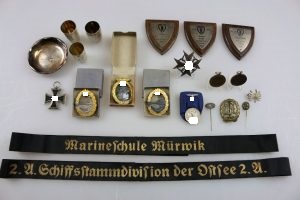
Somit trennen Sammler und auch Händler die Orden von den Papieren….der Name steht auf dem EK 1 oder Zerstörer Abzeichen ja (normalerweise) nicht drauf. Mittlerweile werden auch Orden von den Etuis getrennt (nicht immer, aber immer öfter): Es ist eben einfacher so den Weiterverkauf zu sichern.
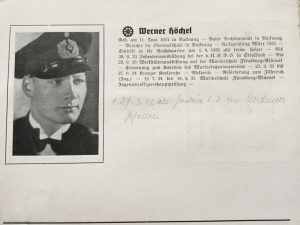
Somit muss jeder für sich selbst entscheiden wie er es handhabt oder wie er es macht. Schlimm wird es (und auch das habe ich schon gesehen) das in einem Nachlass vier Urkunden sind und alle werden EINZELN angeboten…..das finde ich dann schon echt blöd. Bevor ich mich nun da hinein steigere kommen wir zurück zu dem Höchel Nachlass. Nachdem wir den Verlust der Orden und Ehrenzeichen grade so verschmerzen konnten wurde auch hier schnell klar……es wurden Urkunden entnommen und auch Fotos aus dem Fotoalbum.
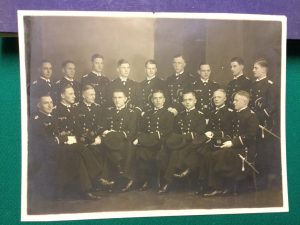
OK, bei Fotoalben passiert es häufiger wenn dort ein Spitzenfoto drin ist das es verschwindet…..aber Urkunde aus einem Nachlass herausnehmen ???
Ich erinnere mich an einen Fall vor ca. 15 Jahren, eine Sammlerfreund, nein eher ein Sammler (weil Sammlerfreunde sind ehrlich) hatte die Möglichkeit einen Ritterkreuznachlass (also Papiere) zu kaufen. Er machte es natürlich und nach kurzer Zeit wurde die Gruppe einem Händler angeboten. Alles an Urkunden war Vorhanden, vom EK 2 über das EK 1 und die VB zum Ritterkreuz und weiter Urkunden zu Kampfauszeichnungen. Was machte der Sammler, er nahm die EK 1 Urkunde raus und legte die zur Seite.
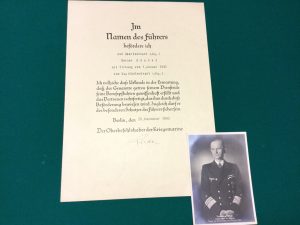
Der Händler kaufte natürlich alles und wollte wissen wo die EK 1 Urkunde ist. Das war natürlich unbekannt und der Preis wurde gezahlt. Zwei Wochen später rief dann der Sammler den Händler an und meinte, die Urkunde wurde gefunden aber das wird teuer…….Was soll ich sagen, ich war etwas verwirrt als ich die Geschichte hörte.
Wie auch immer hoffe ich das wir durch diese Vorstellung des Nachlasses mit viel Glück die restlichen Urkunden des Kapitänleutnants Höchel finden können um möglicherweise den Nachlass wieder zu komplettieren.
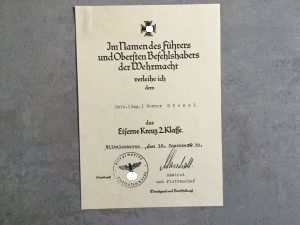
Zur Person:
Höchel trat als Freiwilliger in die Kriegsmarine ein und wurde Mitglied der Crew 33. Hier finden wir auch Persönlichkeiten wie Lüth, Henke, Hoffmann (Heiner) und Hardegen.
Am 01. Oktober 1936 wurde er zum Leutnant zur See, am 18. Mai 1938 zum Oberleutnant zur See und schließlich am 01. Januar 1941 zum Kapitänleutnant (ing) befördert.
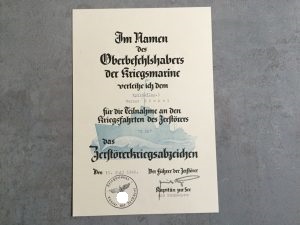
In dieser Zeit wurden ihm folgende Auszeichnungen verliehen:
Dienstauszeichnung IV Jahre am 01.04.1937
Spanienkreuz in Bronze ohne Schwerter am 06. Juni 1939
Sudetenlandmedaille am 16.12. 1939
Memelland Medaille (Urkunde fehlt) (Datum unbekannt)
Eisernes Kreuz 2. Klasse 1939 am 18. Dezember 1939
Zerstörer Kriegsabzeichen am 17. Januar 1941 auf Torpedoboot 10 (Urkunde fehlt)
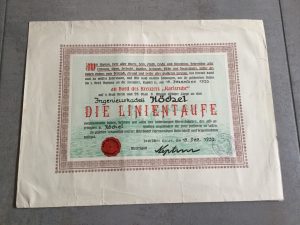
Zerstörer Kriegsabzeichen am 15. Juli 1942 auf Z 26
Auf dem großen Foto des Konvolutes sind die Orden zu sehen. Hier auch nochmal zu erkennen das Höchel zwei Zerstörer Kriegsabzeichen Abzeichen und ein Flottenkriegsabzeichen sein Eigen nennen durfte. Da ich aus den Unterlagen keine Zeit auf einem „Dickschiff“ erkennen kann und keine Urkunde vorhanden ist, bleibt das ein Rätsel. Weiterhin hätte er als Torpedoboot Mann im Nachhinein (Stiftung 30. Mai 1941) das Schnellboot Kriegsabzeichen bekommen müssen / es anfordern können.
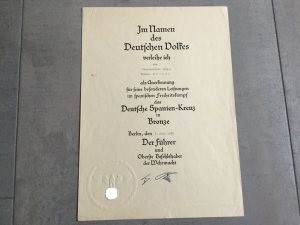
Hier etwas zu Geschichte der Boote und Schiffe auf denen Höchel gefahren ist.
Torpedoboot „T 10
Bootstyp:
Das Torpedoboot „T 10“ war ein Boot des Torpedoboots-Typs 35.
Indienststellung: 6. August 1940 / Besatzung: 119 Mann /Verdrängung: 1.082 t
Länge über alles: 87,1 m / Breite: 8,62 m / Tiefgang: 2,94 m
Höchstgeschwindigkeit: 34,5 kn
Bewaffnung:
Seeziel-Artillerie: Ein 10,5-cm cm SK / Flak: 5 – 12 x 2-cm FlaMG
Torpedos: Sechs 53,3-cm Torpedorohre in Drillingsrohrsätzen
Lebenslauf:
Das Torpedoboot „T 10“ wurde am 6. August 1940 in Elbing in Dienst gestellt. Am 6. und 7. November 1940 unternahmen die 1. und 2. Torpedoboots-Flottille einen Vorstoß gegen die schottische Ostküste. Dabei beteiligten sich die Boote „T 1“, „T 4“, „T 6“, „T 7“, „T 8“, „T 9“ und „T 10“. Dabei ging „T 6“ etwa 40 sm vor Kinnaird Head durch einen Minentreffer verloren, woraufhin die Unternehmung abgebrochen wurde. Am 24. September 1940 lief der schwere Kreuzer „Admiral Hipper“ aus Kiel aus, um zur Handelskriegsführung in den Atlantik durchzubrechen. Zur Sicherung durch das Nordmeer liefen „T 10“ und „T 12“ aus Kristiansand bzw. Stavanger aus. Am 27. September traten westlich von Stavanger schwere Maschinenschäden auf „Admiral Hipper“ auf, so dass der Kreuzer nach Kiel zurückkehren musste. Die Torpedoboote „T 10“ und „T 12“ liefen nach Kristiansand und Stavanger zurück. Am 28. / 29. Dezember 1940 sicherten die Torpedoboote „Falke“, „Greif“, „Seeadler“, „T 1“, „T 7“, „T 9“, „T 10“ und „T 12“ die Schlachtschiffe „Gneisenau“ und „Scharnhorst“ bei ihrem Versuch, in den Atlantik durchzubrechen. Wegen eines Schadens auf der „Gneisenau“ musste der Versuch jedoch abgebrochen werden. Am 6. Juli 1942 lief das Boot aus Swinemünde aus, um an den Flottenübungen vor Bornholm teilzunehmen. Beteiligt waren die leichten Kreuzer „Emden“, „Köln“ und „Leipzig“, der Zerstörer „Friedrich Eckoldt“ sowie die Torpedoboote „T 4“, „T 10“, „T 14“, „T 18“, „T 19“ und „T 22“. Abends lief das Boot wieder in Swinemünde ein. Am 16. Juli 1944 beschädigten die Torpedoboote „T 8“, „T 10“ und „T 30“ vor Narwa den sowjetischen U-Jäger „MO-121“. Am 20. und 21. August 1944 sicherten „T 1“, „T 4“, „T 8“, „T 8“ und „T 10“ den schweren Kreuzer „Prinz Eugen“ bei dessen Einsatz im Rigaer Meerbusen bei Tukkum. Am 18. Dezember 1944 ist das Boot im Schwimmdock in Gotenhafen nach einem Bombenangriff gesunken.
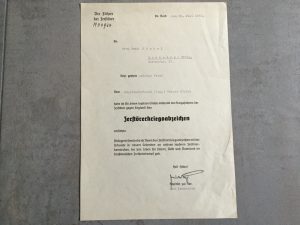
Dann auch noch Zerstörer Z 26 der auch gleichzeitig das letzte Kommando von Kapitänleutnant Höchel sein sollte.
Zerstörer Z 26 war 127 m lang, 12 m Breit und hatte einen Tiefgang von 4,43 Meter. Besatzung 332 Mann
Im November 1941 verlegte Z 26 nach Nordnorwegen. Am 16. Dezember 1941 stieß Z 26 als Flottillenboot der 8. Zerstörer Flottille mit Z 23, Z 24, Z 25 und Z 27 von Kirkenes aus gegen die Kola-Küste vor. Als Z 26 wegen eines Maschinenschadens ausfiel, wechselte der Flottillenchef auf Z 25 und Z 26 ging nach Kirkenes zurück, von wo der Zerstörer am 5. Januar 1942 zusammen mit Z 27 die Rückfahrt nach Deutschland zur Reparatur antrat. Am 10. Januar lief Z 26 in Kiel ein für die Werftarbeiten.
Am 19. März 1942 fuhr Z 26 im Verband mit den Zerstörern Theodor Riedel, Z 24, Z 30, drei Torpedobooten und dem Schweren Kreuzer Admiral Hipper von Brunsbüttel zum norwegischen Trondheim ab. Von Trondheim fuhr Z 26 mit Z 24 und Z 25 weiter nach Kirkenes von wo aus am 28. März 1942 die 8. Zerstörer Flottille mit Z 24, Z 25 und Z 26 gegen den Geleitzug PQ 13 eingesetzt wurde. PQ 13 war am 27. März von einer BV 138 der 2./K.Fl.Gr. 406 entdeckt worden, der in einem Sturm seinen Zusammenhalt verloren hatte. Gesichert wurde der Konvoi durch den Kreuzer Trinidad, die Zerstörer Eclipse, Fury, den Geleitzerstörer Lamerton sowie zwei U-Abwehr-Trawler und drei ehemals norwegische Walfangboote, von denen eines im vorherigen Sturm gesunken war. Von Murmansk aus stießen der britische Zerstörer Oribi und die sowjetischen Zerstörer Gremyashchi und Sokrushitelny zum sich wieder organisierenden Geleitzug.
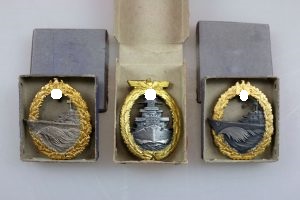
Die deutschen Zerstörer waren auf ihrer Suche zuerst auf den versprengten Frachter Bateau (4687 BRT) getroffen, den Z 26 versenkte. Bei geringer Sicht und Schneetreiben stießen die deutschen Zerstörer dann auf den vor dem Geleitzug laufenden Kreuzer Trinidad und den Zerstörer Fury. Die Trinidad schoss Z 26 manövrierunfähig. Z 24 und Z 25 konnten 88 Mann von der sinkenden Z 26 retten. Das deutsche U-Boot U 378 konnte acht Überlebende von Z 26 aus einem Rettungsboot übernehmen. 240 Mann fanden auf Z 26 den Tod. KptLt Höchel ist auf Z26 gefallen und hat sein Seemansgrab gefunden.






















Ich bin sicher das irgendwo die fehlenden Urkunden schlummern und möglicherweise finden wir auf diesem Weg ja eine Möglichkeit den Nachlass zu komplettieren.
Ich würde mich freuen, wenn es klappt und hoffe das der Beitrag gut zu lesen war.
Sammlergruß
Sascha
„Subscribe“ / „abonniere“ den Blog und bekomme immer dann eine Nachricht, sobald ein neuer Beitrag erscheint….
Copyright 2018 : Alle Rechte bei dem Verfasser Sascha Ulderup



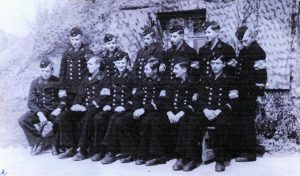
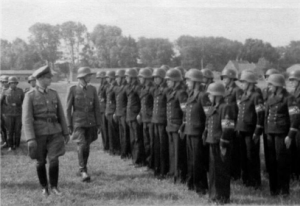
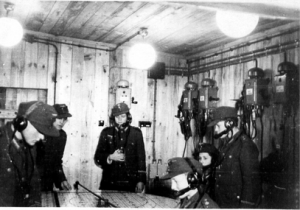
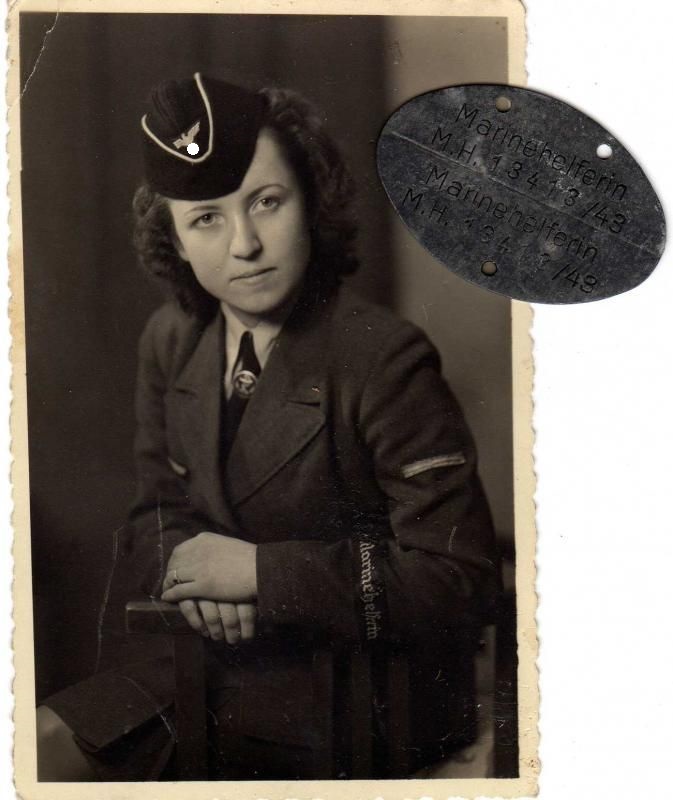 A “Marineherlferin” was a female helper to the Kriegsmarine. They received various specialized training, as there were: air traffic, radio, telex and telephone service, the list probably does not even cover all training directions. So there was no active weapon duty. Actually sort of “NH des Heeres” in the Army or “Blitzmädel” of the Luftwaffe.
A “Marineherlferin” was a female helper to the Kriegsmarine. They received various specialized training, as there were: air traffic, radio, telex and telephone service, the list probably does not even cover all training directions. So there was no active weapon duty. Actually sort of “NH des Heeres” in the Army or “Blitzmädel” of the Luftwaffe.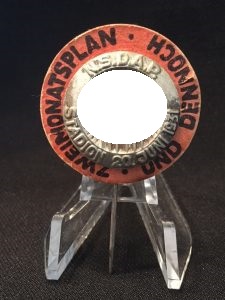
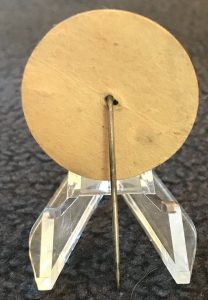
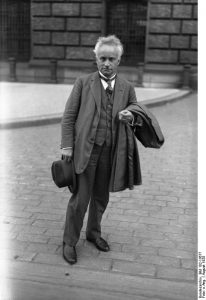
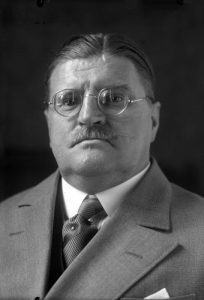
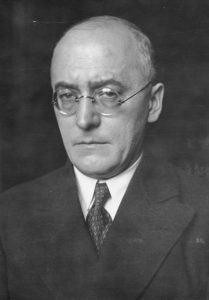
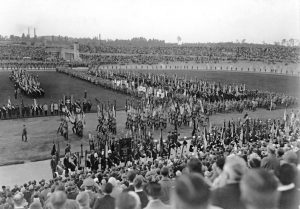
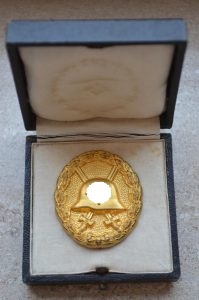
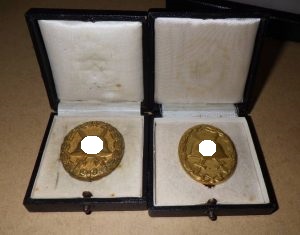
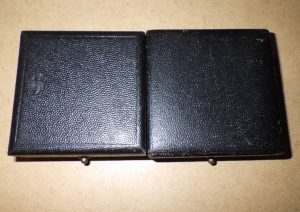
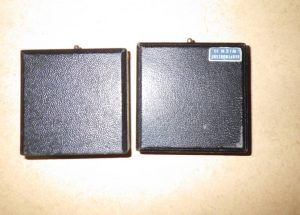
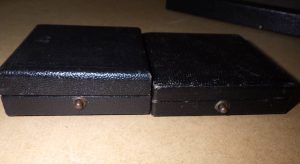
















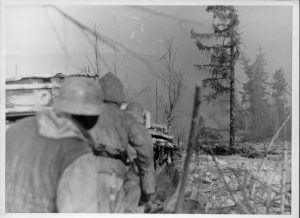
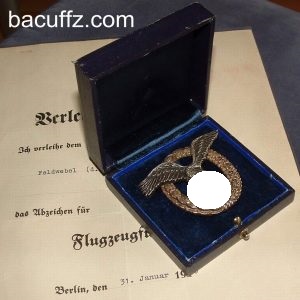
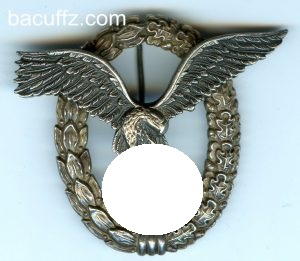
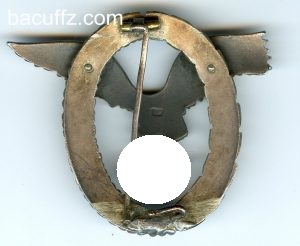
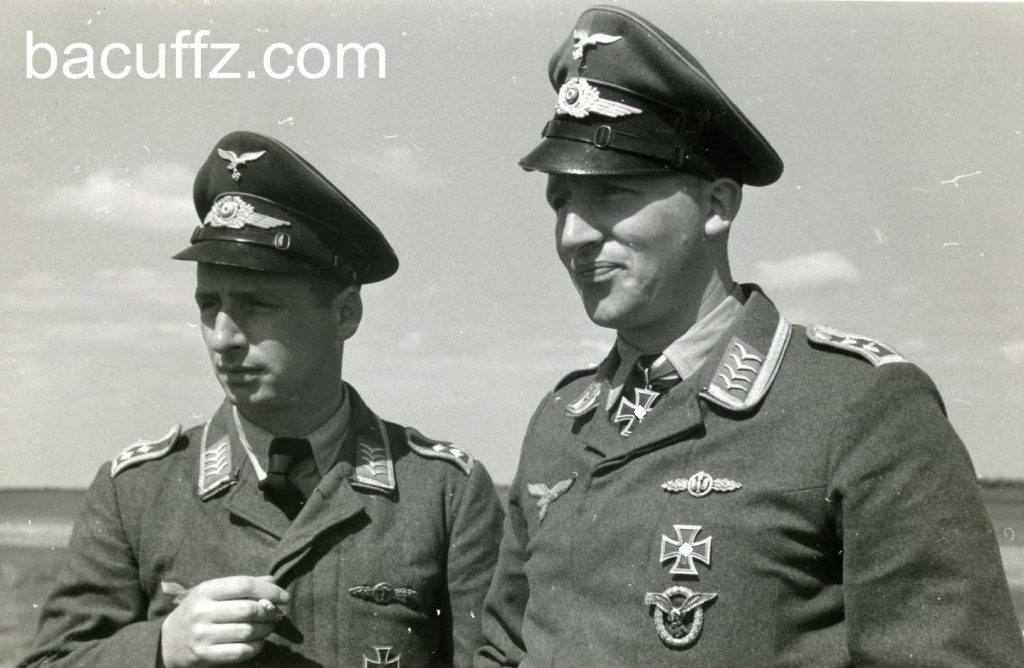
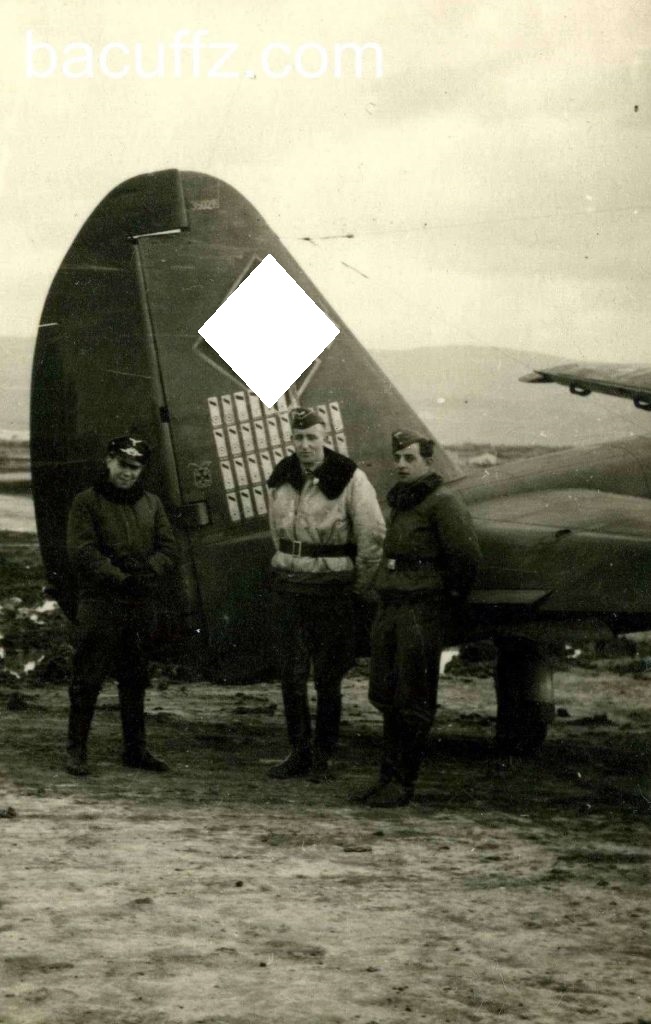
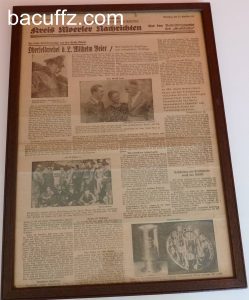
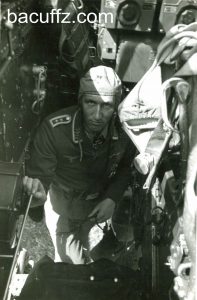
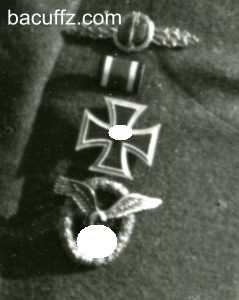
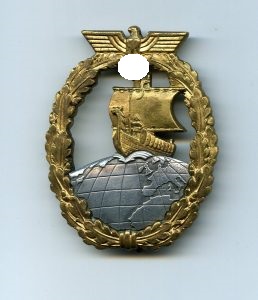
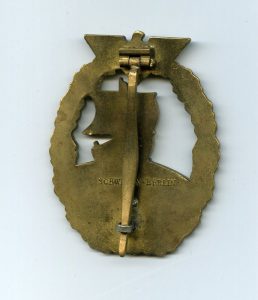
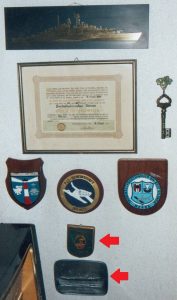
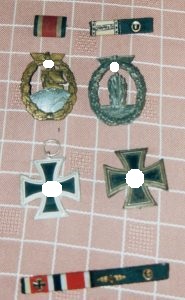
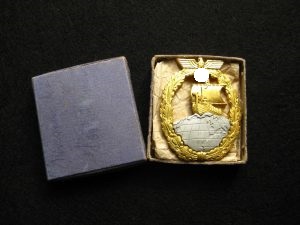
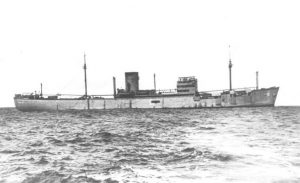
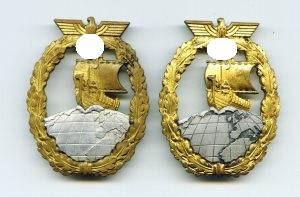
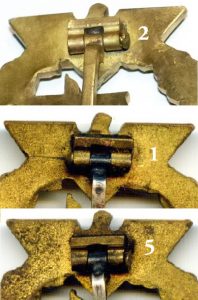
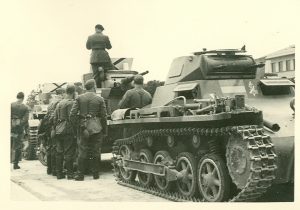
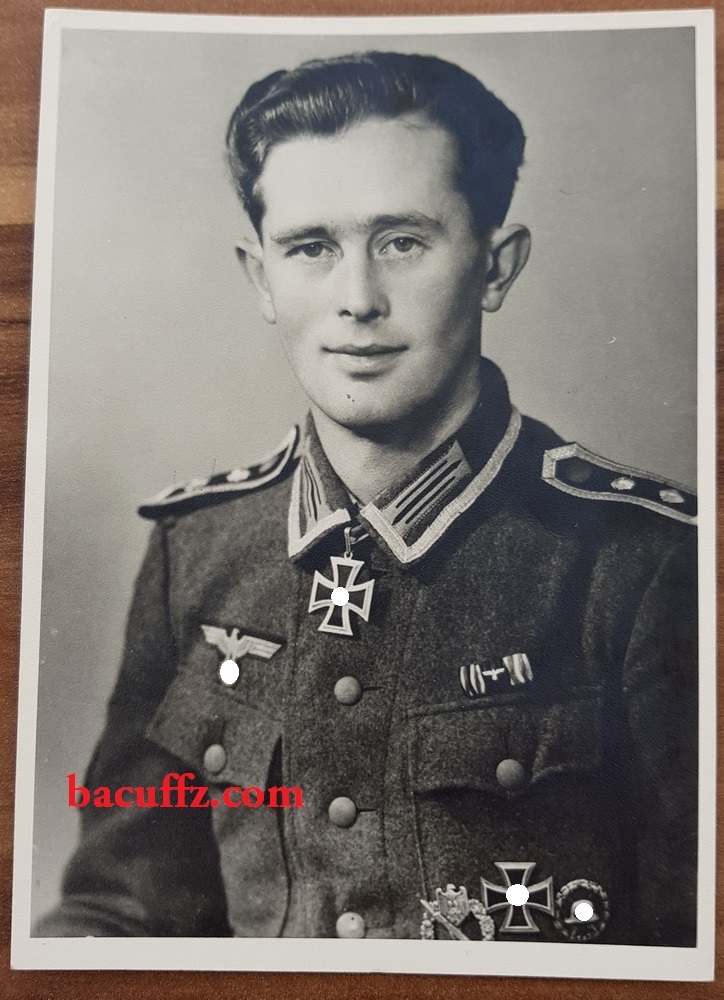 Es handelt sich um den Ritterkreuzträger Edwin Ebinger, Gebirgsjäger Regiment 13 der 4. Gebirgsdivision. Ebinger hat sich sein Ritterkreuz tapfer verdient in dem er auf eigene Faust, nach dem der Kompanieführers ausgefallen ist, mehrere Gräben vom Feind säuberte und den dadurch gebildeten russischen Brückenkopf spalten konnte.
Es handelt sich um den Ritterkreuzträger Edwin Ebinger, Gebirgsjäger Regiment 13 der 4. Gebirgsdivision. Ebinger hat sich sein Ritterkreuz tapfer verdient in dem er auf eigene Faust, nach dem der Kompanieführers ausgefallen ist, mehrere Gräben vom Feind säuberte und den dadurch gebildeten russischen Brückenkopf spalten konnte.